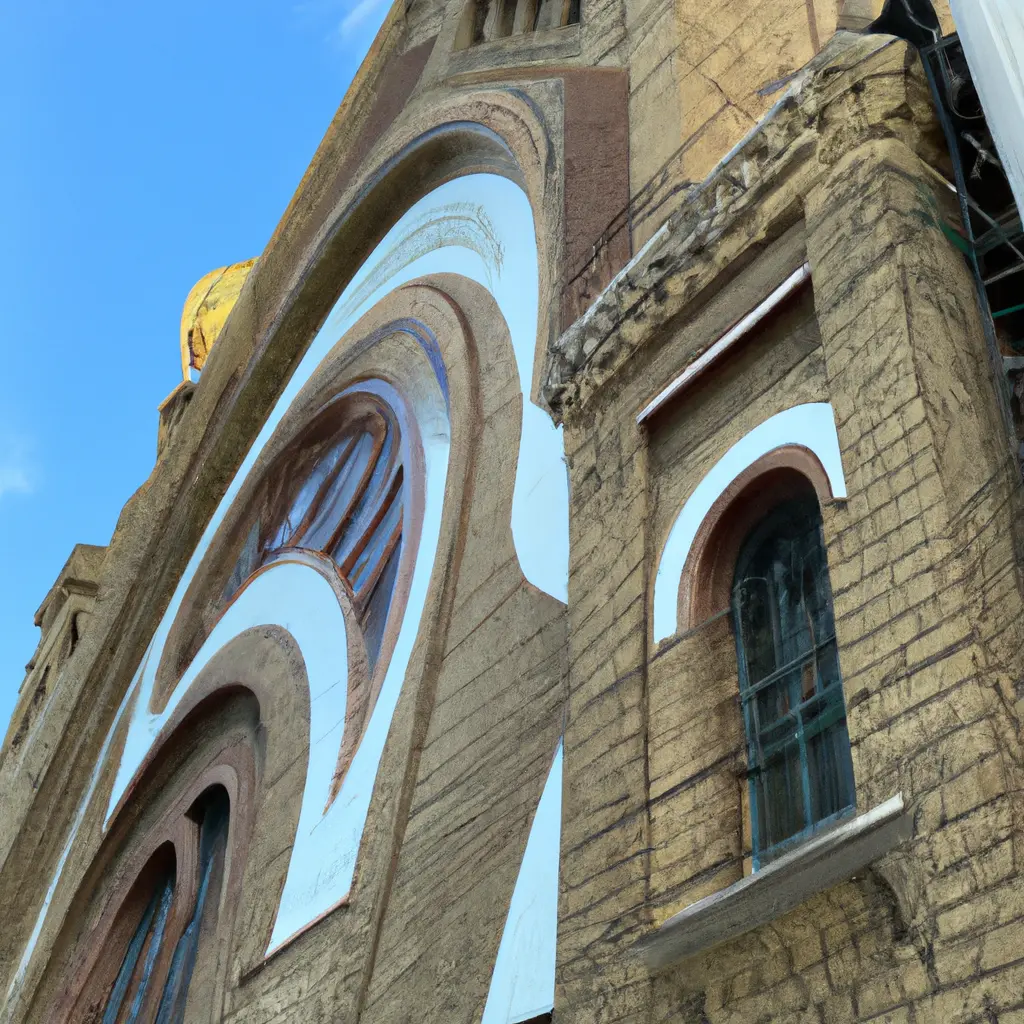The Jewish community of the city in Serbia is in danger after surviving the Holocaust
The Jewish community of the city in Serbia is in danger after surviving the Holocaust

Renovation of the Novi Sad Synagogue
On August 31, 2023 at 04:45, the facade of the Novi Sad Synagogue was surrounded by scaffolding as the building underwent a major renovation. In the heart of the city center, surrounded by brick buildings on a green street, sits a large synagogue. With its 130-foot-tall central dome and faded yellowish brick facade, and with a Jewish school and offices on the sides, the synagogue's three-building complex has become a popular tourist attraction with multilingual panels in the courtyard telling the history of Jews in the area. The synagogue was built in the early 20th century and could accommodate up to 950 congregants. However, like the rest of the city and all of Serbia, the building has obviously seen better days.The shrinking of the Jewish community
In recent times, a family could be seen begging money from passers-by in front of the synagogue entrance. Before World War II, Novi Sad was home to about 60,000 people, of whom 4,300 were Jews - about 7% of the total population. Most of them were wealthy merchants, lawyers, doctors and professors. Their wealth was reflected in the city's opulent synagogue, built between 1906 and 1909 by Hungarian-Jewish architect Lipot Baumhorn, whose work incorporated Art Nouveau elements. Today, the building serves a dwindling community that, like others that suffered through the Holocaust and intensified during the Balkan wars of the 1990s, fears for its future as residents disperse abroad. Only about 640 Jews remain in Novi Sad, others seeking their future in Israel or in countries with more economic opportunities.Anti-Semitism in Serbia
While manifestations of anti-Semitism are not too common, Serbia, like most other Eastern European countries, also struggles with strong nationalist sentiments. Traer, who closely tracks anti-Semitism, said about 1,500 Serbs belong to extremist groups, of which perhaps 120 are active. Serb Action, a small group of neo-Nazis, occasionally holds rallies and writes anti-Semitic, anti-immigrant and anti-gay inscriptions on public buildings. "In middle school, my history teacher used to joke that Hitler couldn't get into the art academy so he decided to kill Jews," said Theodora Paljic, a 20-year-old Jewish student. "I don't talk about these things with people I don't trust." She said that "Life in Serbia is very difficult" because "all prices have gone up and salaries haven't increased since 2019."History of Jews in Novi Sad
Novi Sad was the center of Jewish life in pre-war Yugoslavia, and this city of 370,000 people, sometimes referred to as the "Serbian Athens," has been named European Capital of Culture 2022 for its artistic, culinary, architectural and other cultural attractions. However, most local Jews see no prospects for themselves in a country suffering from economic hardship.Life in Novi Sad
Novi Sad is the capital of Vojvodina, an autonomous province that occupies most of northern Serbia, and at its peak, the local Jewish community had 86 synagogues in the province. Today, only 11 synagogues stand, and most of them have fallen into disrepair. Mirko Stark, president of the Novi Sad Jewish Community, said Jews settled in the city in the 17th century, shortly after it was founded in 1694 under the Habsburg monarchy. "When the Austro-Hungarian Empire, where most Ashkenazi Jews lived, introduced new laws restricting Jewish life in cities, many people fled to the border, where these laws were not as strictly enforced," Stark said. Later, when the Serbs took over Vojvodina, these restrictions were lifted and the Jewish community flourished.Recommended News
Recommended real estate
After World War I and the creation of the Kingdom of Serbs, Croats and Slovenes - later Yugoslavia - the Jews of Novi Sad enjoyed a cultural and economic blossoming with the establishment of a Jewish community center, sports clubs, choirs and several Jewish newspapers. This prosperity came to an abrupt end in 1941 when the Hungarian army, collaborating with Nazi Germany, occupied Novi Sad, making life for the Jews unbearable. Over the course of three days in January 1942, known as the Novi Sad Massacre, the Hungarians rounded up more than 1,400 Jews, confiscated their property, shot them in the back and threw them into the icy Danube River. After Hungary's surrender to Germany, armed guards rounded up the remaining 1,800 Jews
The future of the Jewish community
“There are no more religious people left, and there is no rabbi,” Stark said. “Many moved to Israel during the first aliyah. The small number of Jews who remained tried to keep the community alive by opening a kitchen to provide food for those who couldn’t buy it themselves. My grandmother survived Auschwitz. She worked in that kitchen.” According to Traer, there were no Shabbat services held from 1948 to 2022. Currently, all religious services are conducted by Traer, as he is the only one who knows Jewish prayers in Hebrew fluently. Novi Sad has the second largest Jewish population after Belgrade. More than half of the country’s Jews live in the capital—out of a total of 3,000 people in a country with a population of 7.1 million. Smaller Jewish communities also exist in Subotica, Niš, and other cities. Only the synagogues in Belgrade and Subotica are operational, with the latter located just a few miles from the border with Hungary. Most members of the Novi Sad community, including Stark, are married to non-Jews. “My wife is not Jewish. My mother wasn’t Jewish either. Only my father was Jewish,” he said. “After World War II, the opportunities for finding non-Jewish husbands and wives within the community were limited. So we accept non-Jewish spouses as members. It’s the only way to survive.”Comment
Popular Posts
Popular Offers

Subscribe to the newsletter from Hatamatata.com!
Subscribe to the newsletter from Hatamatata.com!
I agree to the processing of personal data and confidentiality rules of Hatamatata














